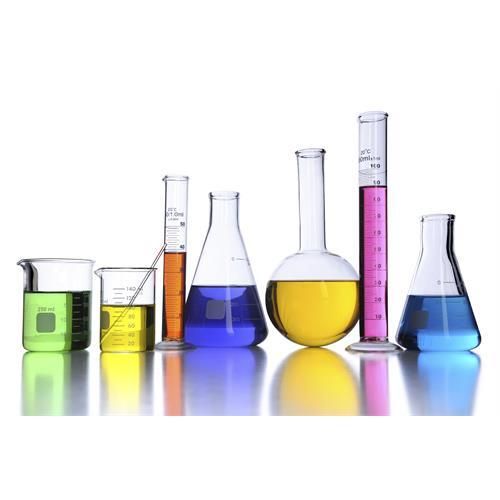How can I be sure I am really killing all germs?

Not all disinfecting & sanitising products have a wide range of efficacy on microorganisms found in healthcare environments, and marketing around product claims can be misleading.
Products need to be tested in thorough and specific conditions to be able to claim effectiveness against a select strain of pathogens.
What different microorganisms are there?
Pathogens, or infectious microorganisms, or more simply “germs”, can be grouped into the following categories, which are listed from hardest to easiest to kill:
| • | Bacterial spores are one of the most difficult types of microorganisms to kill because of their survival mechanisms and resistance to standard cleaning techniques and solutions. Common examples include the Bacillus (Anthrax) and Clostridium (C. Diff) families. All bacteria spores are vegetative and sporulate when environmental conditions force them to do so. |
| • | Mycobacteria can cause serious illness and disease, such as Tuberculosis and Leprosy. This type of pathogen has an exterior thick waxy coating that makes them very resilient and resistant to antimicrobials. |
| • | Non-enveloped Lipid Viruses form a capsule, which is a protective casing made up of proteins and fats. The virus remains viable until it finds a living host. Once inside a living cell, they are activated and able to replicate and spread such as the Poliovirus and Norovirus. |
| • | Fungi refers to yeasts and moulds such as Aspergillus and Candida, which can grow in cold or warm environments and need moisture in order to thrive. Humans have fungi in the gut that are needed for healthy functioning but when the balance of fungi is disrupted, it can cause health issues like skin or respiratory conditions. |
| • | Vegetative Bacteria are split into two families, gram-positive and gram-negative. Gram-positive bacteria are harder to kill of the two because of their resistance to antibiotics, however there is a trend showing that gram-negative bacteria are adapting to build up the same type of tolerance. Vegetative bacteria are mostly responsible for starting and building biofilms on surfaces, although any microorganism can shelter within the biofilm once its created. |
| • | Large Non-enveloped Viruses have a protective protein layer and are larger in size and are not difficult to kill. Examples are the Adenovirus and Rotavirus. |
| • | Enveloped Lipid Viruses such as the Herpes Simplex virus and COVID-19 are more susceptible to antimicrobial agents. |
Why are biofilms and spores so hard to kill & eliminate?
Pathogens react differently to cleaning techniques and disinfectant solutions because of their physiological structure. A bacteria spore has a spore coat, similar in concept to the biofilm, which is a polysaccharide structure that covers a pathogen. This coat is a hard-outer layer in which the pathogen lives but remains inactive until conditions are right for it to grow. Spore coats and biofilms offer protection against elements like different disinfectants, heat, pasteurisation, and freezing temperatures.
What different types of tests are used to show effectiveness against pathogens?
Testing the effectiveness of products against microorganisms can be in vitro or in vivo. All results are expressed as a log reduction, which is way of describing the quantity of pathogens before and after the test.
In-vivo is testing is carried out on live subjects or the actual environment and is more complicated, harder to access, and comes with significant risks. But it does offer the most accurate results due to real-life conditions.
In-vitro can be done in three ways: suspension test, carrier test, or CDC biofilm reactor test, in a simulated and controlled environment.
| 1. | A Suspension Test is done where specific microorganisms of a known quantity are placed in a test tube solution. The disinfectant product is added and later neutralised after a certain period. The solution containing the neutralised disinfectant and microorganisms is extracted and incubated in ideal growth conditions. Then the microorganisms are counted to see if any survived, and from this is calculated the Log reduction. |
| 2. | A Carrier Test uses a coupon, for example porcelain or Perspex, on which microorganisms are grown. Once it has established itself on this surface, the microorganisms are counted, and the coupon is inserted into a specific disinfectant formula for a given time. This is more reliable than a suspension test, as it more closely replicates real-life conditions. |
| 3. | A CDC Reactor Test is where pathogens are grown on coupons in certain conditions to develop reasonably sized biofilms. The microorganisms are fed nutrient-rich solutions at a set flow and temperature to ensure a solid biofilm has formed. Then the disinfectant is applied for a certain time then neutralised, and the biofilm is disturbed to release any microorganisms out of the biofilm structure. These microorganisms are then incubated, and survivors counted as per previous methods. This is the most reliable test of disinfectant performance, as approximately 90% of bacteria in the built environment are inside biofilms, not “free-floating” like in a suspension test. |
How should a test claim be stated, and what do “dirty” conditions mean?
A high-quality product will offer comprehensive information to prove its efficacy. A few important aspects will determine if sufficient testing was done to suit the purpose of the product.
One of the most important test methods is detailing whether the test was done in clean or dirty conditions. Hospital-grade disinfectants must be tested in dirty conditions, while household and commercial grade disinfectants can be tested in clean conditions.
Dirty conditions are where organic and inorganic material is present on surfaces that are not cleaned before applying a disinfectant. Dirty condition tests are important for hospital-grade products because some disinfectants are ineffective when organic material is present, which is often the case. The presence of hard water can also affect the efficacy of disinfectants and sanitizers because it contains metal ions. Testing in a worst-case scenario will give the most reliable results.
In contrast, clean conditions are surfaces that are sufficiently cleaned prior to using a disinfectant and do not contain material that will influence the activity of the disinfectant.
To be totally comparable, a test needs to also detail the test method used (in-vivo, suspension, carrier, or CDC reactor), the kill time, and the log reduction countHow can tests be misleading, and what should I look for to prove effectiveness against spores?
Products may use a marketing angle to emphasise its effectiveness; for example, in killing MRSA within 30 seconds. However, looking in more detail, you may find the test was done in clean conditions, in a suspension test.
Or you may see a claim to kill Clostridium Difficile, but find the test was done using the vegetative bacteria and not bacterial spores. These examples point to superficial tests that are not conducted in real-life conditions and are potentially unsafe.
While suspension testing is common, it only gives an “indication” of performance. The best tests for efficacy are carrier tests or CDC reactor tests. Better still are In-vivo tests as they offer the only true-to-life testing environment which can give you real confidence in what you use.
What test proof should I look for in a hand sanitiser?
For a hand sanitizer, look for evidence of an in vivo test with a minimum of a 4-log (99.99) reduction in 30 seconds for common pathogens such as E. coli. These test results ensure it is a bactericidal product. Any product that claims to be virucidal should indicate the testing was done in-vivo and include a list of viruses on which the product was tested.
What test proof should I look for in a surface wipe?
A disinfecting wipe should include compatible surface types and indicate that it is a cleaner and disinfectant.
It should be tested with a verified method to work as a wipe, and not just the fluid that is impregnated in the wipe. The disinfectant must be wet on the surface for a certain amount of time to be able to destroy pathogens that are present. Wipes that achieve a kill time within 1 – 2 minutes are the most realistically effective.
The very best surface wipes should be broad spectrum, effective against biofilms and carrier tested against bacteria, spores, mycobacteria, fungi, and viruses.
